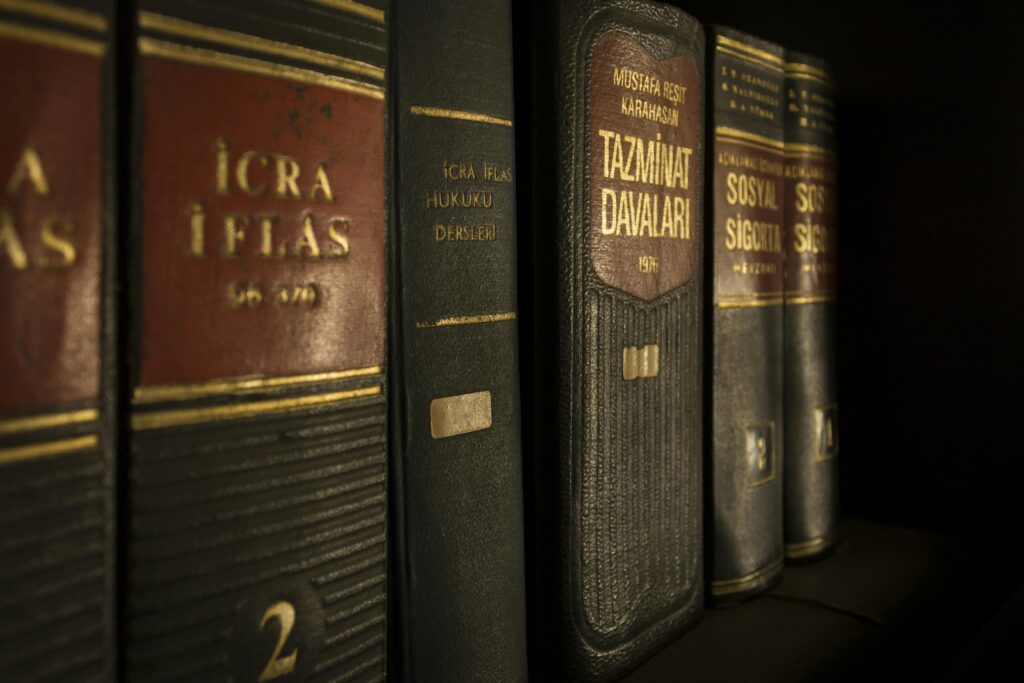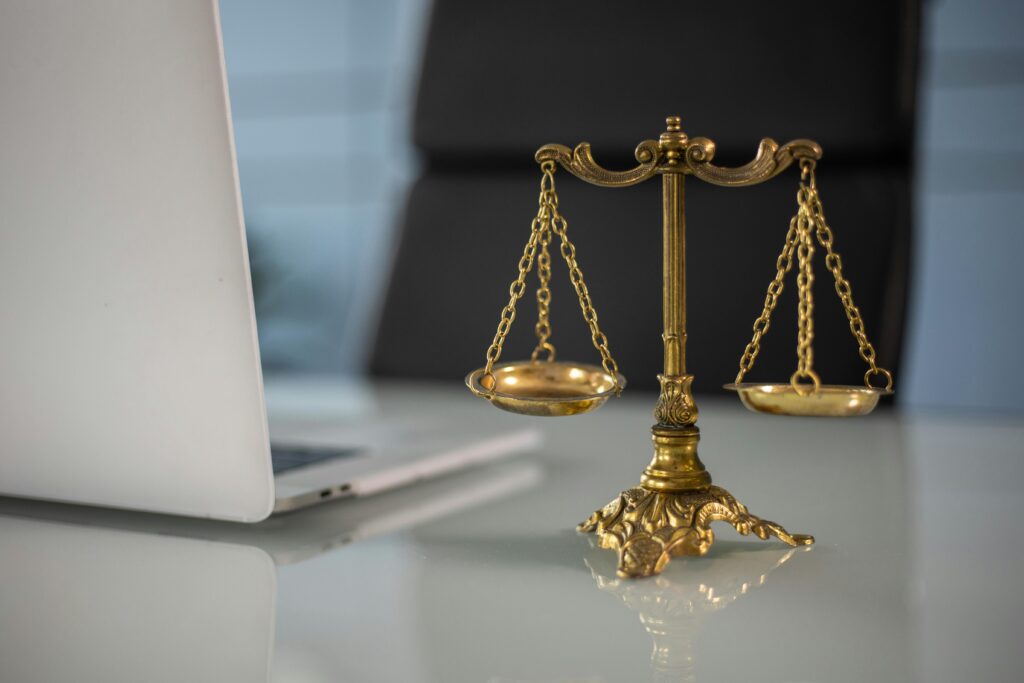Published On: 27th October, 2024
Authored By: Kiran Chauhan
BPSMV Khanpur Kalan, Sonipat
Trademarks play a significant part in the business world by empowering organizations to lay out their unique identity and ensuring consumer recognition. This article investigates the complexities of trademark protection and encroachment in India, giving an in-depth understanding of the legal framework, registration process, and enforcement mechanisms.
Introduction
A trademark is a particular sign or marker utilized by an individual, business association, or other lawful entity to distinguish items or services as originating from a unique source. Brand names can be words, logos, images, or a blend of these components. They act as a fundamental device in marking and keeping up with the standing of organizations, in any case, with the increasing value attributed to brands, the risk of trademark infringement has also escalated, necessitating robust legal protection mechanisms.
TRADEMARK LAW IN INDIA
The Trademarks Act, 1999:
The primary legislation governing trademarks in India is the Trademarks Act, of 1999. This Act provides comprehensive guidelines on registering, protecting, and enforcing trademark rights.
DEFINITIONS:
- TRADEMARKE: It is defined under Section 2(1)(zb) of the Trademarks Act, A Trademark implies a symbol or imprint that is equipped for being addressed graphically and which fits for recognizing the services and products of one individual from those of others.
- ABSOLUTE GROUNDS FOR REFUSAL: Section 9 of the Demonstration expresses that the outright reason for the refusal of trademark registration is due to the absence of uniqueness and the possibility of misdirecting the general public.
- APPLICATION PROCESS: Section 18 defines the process of registration of the trademark.
- INFRINGEMENT OF TRADEMARK: The infringement of a trademark is given under section 18 of the Act, this part defines what constitutes the infringement and the specific action which considered the infringement.
TRADEMARK REGISTRATION PROCESS:
The trademark registration process in India is a methodical system intended to give legitimate security to the proprietors of brand names. This interaction includes a few stages, each significant to guarantee the trademark is one of a kind and recognizable, consequently protecting the brand character of the proprietor. Here is a definite breakdown of the trademark registration process in India:
- Trademark Search
Before applying, it is vital to conduct a thorough trademark search to ensure that the proposed brand name doesn’t conflict with existing trademarks. A search can be led through the internet-based data set given by the Controller General of Patents, Designs, and Trademarks. It includes checking for brand names in comparable classes and product/service categories to stay away from likely contentions.
- Application Filing
The application for trademark registration is recorded with the Controller General of Patents, Designs, and Trademarks. The application can be recorded either online through the authority IP India site or offline at the trademark registry offices.
Details Required:
- Applicant Information: Name, address, and nationality of the applicant.
- Trademark Details: Representation of the trademark, whether it is a word, logo, symbol, or any other form.
- Goods/Services: List of goods or services for which the trademark will be used, categorized as per the NICE classification.
- Class of Trademark: Class under which the trademark is to be registered.
- Power of Attorney: If the application is filed through an attorney, a Power of Attorney must be submitted.
- Examination of the Application
After filing, the trademark office examines the application for consistency with legal statutory and checks for any struggles with existing brand names. The assessment incorporates a survey of outright and relative reasons for refusal as determined in Sections 9 and 11 of the Trademarks Act, 1999.
- Response to Examination Report
On the off chance that the assessment report contains objections, the applicant should answer within a predefined period (normally 30 days). The response may include clarifications, corrections, or legitimate contentions to conquer the complaints. If the objections are not settled in written responses, a meeting might be planned where the candidate or their lawyer can introduce contentions.
- Publication in the Trademark Journal
When the application passes the examination stage, it is published in the Trademark Journal. Publication allows the public to review the trademark and raise any objections. The trademark is open for resistance for a time of four months from the date of distribution. Any outsider can record resistance on the off chance that they accept the trademark clashes with their current existing rights.
- Opposition Proceedings
If resistance is documented, the trademark office leads a conference where both parties can introduce their contentions and proof. In light of the meeting, the brand name office chooses whether to acknowledge or dismiss the resistance.
- Registration and Issuance of Certificate
On the off chance that no restrictions are recorded inside the resistance period, or on the other hand assuming any resistances are settled for the applicant, the trademark proceeds to registration. The trademark office issues a registration certificate, confirming the trademark is now registered. The registered trademark is valid for ten years from the date of application. The trademark can be renewed indefinitely for successive periods of ten years upon payment of the renewal fee.
- Post-Registration
Trademark proprietors ought to effectively screen the marketplace to guarantee no unapproved utilization of their brand name. Legal action can be taken against any encroaching gatherings to safeguard the trademark rights. Any changes to the trademark, for example, design or ownership transfers, must be updated with the trademark office.
TRADEMARK INFRINGEMENT IN INDIA
Infringement under Section 29 of the Trademarks Act, 1999
Section 29 of the Trademarks Act, 1999, is pivotal in defining trademark infringement and detailing the specific actions that constitute such infringement. This section provides a comprehensive legal framework to protect trademark owners from unauthorized use of their marks.
Detailed Provisions of Section 29
- Use of Identical or Similar Marks: Section 29(1): A registered trademark is encroached when an person, who isn’t the registered owner, involves in that frame of mind of exchange an imprint which is identical with, or misleading like, the trademark about goods or services in regard of which the trademark is registered. This utilization should be in such a way that it is probably going to create confusion among the general population or make an impression of a relationship with the registered trademark.
- Use in Advertising: Section 29(2):Infringement likewise happens if a person uses a mark that is identical with or similar to the enlisted brand name and such use concerning goods or services not covered by the registration exploits, or is detrimental to, the distinctive character or repute of the registered trademark.
- Identical Marks for Identical Goods or Services: Section 29(3): If the infringing mark is identical to the registered trademark and utilized for identical goods or services, the court assumes a probability of disarray among the public.
- Similar Marks for Similar Goods or Services: Section 29(4): In situations where the infringing mark is similar to the registered trademark and utilized for comparable goods or services, the trademark proprietor should show the probability of confusion to lay out infringement.
- Reputation and Detriment: Section 29(4)(c): If the registered trademark is well-known, involving an identical or similar mark for unique labor and products can comprise encroachment on the off chance that such use demonstrates an association with the registered trademark and is probably going to harm its standing or make the most of its peculiarity.
- Use of a Registered Trademark in Business Papers and Advertising: Section 29(5): The utilization of a registered trademark on business papers or in advertising, where such use is probably going to be taken as demonstrating an association throughout exchange between the goods or services and the registered trademark proprietor, constitutes infringement.
- Comparative Advertising: Section 29(8): Indeed, even in comparative advertising, the mark is used to identify the goods or services of a competitor, on the off chance that the utilization is misleading or disparaging to the registered trademark, it might comprise encroachment.
- Special Case of Use of Registered Trademark as Trade Name or Part of Trade Name: Section 29(6): Involving a registered trademark as a piece of a trademark or business name, or part of the name of an organization managing labor and products regarding which the brand name is enrolled, likewise comprises encroachment.
Examples of Infringing Actions
- Counterfeiting: Creating and selling goods under a mark identical to a registered trademark.
- Passing Off: Using a deceptively similar mark to mislead consumers into believing the goods or services originate from the trademark owner.
- Dilution: Using a famous trademark in a manner that blurs its distinctiveness or tarnishes its reputation.
- Cybersquatting: Registering domain names that are identical or similar to registered trademarks to profit from the trademark owner’s reputation.
PROTECTION AGAINST TRADEMARK IN INDIA
Trademark protection is essential for businesses to maintain their brand identity and prevent unauthorized use that could lead to consumer confusion or damage to their reputation. The Trademarks Act, 1999, provides a comprehensive legal framework to protect registered trademarks and offers various measures to safeguard against infringement.
Preventive Measures
- Trademark Registration: Registering a trademark is the first step in protecting it from infringement. A registered trademark gives the proprietor exclusive rights to involve the imprint for the labor and products it is enlisted for. Conduct a trademark search, file an application, go through an examination, address any objections, and complete the enrollment cycle to get a trademark certificate.
- Trademark Monitoring: Regularly screen the market and trademark registry for possible encroachments or comparable imprints being utilized without approval. Use brand name watch administrations and online apparatuses to follow unapproved utilization of the trademark across different stages and enterprises.
- Trademark Licensing and Franchising: Draft clear and comprehensive licensing agreements while permitting others to utilize the trademark. This guarantees that the trademark is utilized accurately and inside the concurred boundaries. For establishments, guarantee that the establishment understands and remembers severe rules for the utilization of the trademark to keep up with brand consistency and quality.
- Brand Guidelines: Layout and uphold interior brand rules for employees and partners to guarantee reliable and right utilization of the trademark. Provide training sessions for employees and partners on the importance of trademark protection and the correct usage of the brand’s trademarks.
Legal Remedies for Trademark Infringement
When preventive measures are insufficient, and infringement occurs, the Trademarks Act, 1999, provides several legal remedies to protect the trademark owner’s rights.
- Injunctions
Types of Injunctions:
- Temporary/Interim Injunction: In truth during the pendency of the legal actions to prevent further encroachment until the case is chosen. This is often essential in preventing continuous damage to the trademark proprietor’s business and reputation.
- Permanent Injunction: Given after the trial, permanently restraining the infringer from utilizing the encroaching mark. This guarantees that the trademark proprietor’s freedoms are safeguarded long haul. Directives are intended to promptly stop the encroaching activities, preventing further harm to the brand name proprietor’s image and business. The trademark owner must file a lawsuit in a competent court and request an injunction. The court assesses the probability of disarray, the strength of the brand name, and the possible damage to the trademark proprietor.
- Damages
Types of Damages:
- Compensatory Damages: Awarded to compensate the trademark proprietor for actual losses suffered experienced because of the encroachment. This incorporates loss of sales, harm to reputation, and other monetary misfortunes straightforwardly owing to the encroachment.
- Punitive Damages: Awarded to punish the infringer for heinous direct and to discourage future infringements. These damages are frequently higher than compensatory harms and are expected to set a model.
- Nominal Damages: Granted when the encroachment is demonstrated, however, the brand name proprietor can’t exhibit huge monetary misfortune. These are emblematic harms of perceiving the infringement of privileges.
Assessment:
- The court evaluates the degree of monetary misfortune, the term of the encroachment, and the direction of the infringer in deciding how much harm.
- Account of Profits
This cure permits the trademark proprietor to recover the benefits made by the infringer from the unapproved utilization of the brand name. It depends on the rule that the infringer shouldn’t profit from their improper direction. The trademark proprietor should give proof of the infringer’s benefits owing to the encroachment. The court orders the infringer to give financial records, and the benefits are determined in light of these records.
- Delivery Up and Destruction of Infringing Goods
The court might arrange for the infringer to convey all encroaching goods, packaging, labels, advertising materials, and any other items bearing the infringing mark to the trademark proprietor. The court might arrange the destruction or disposal of the encroaching merchandise to keep them from reemerging in the market. This guarantees that the encroaching merchandise doesn’t hurt the brand name proprietor’s business.
- Anton Piller Orders
An Anton Piller request is a sort of search and seizure request that permits the trademark proprietor to enter the infringer’s premises and hold onto proof of encroachment without earlier advance notice. This prevents the infringer from destroying or concealing evidence. The trademark proprietor should exhibit to the court that there are serious areas of strength for a facie instance of encroachment, a risk of destruction of evidence, and that the balance of convenience favors the granting of the order. The court designates a chief to supervise the execution of the request, guaranteeing that the pursuit is directed decently and legally.
- Declaratory Relief
A definitive judgment is a court statement affirming the brand name proprietor’s freedoms and the way that encroachment has happened. This sort of help gives legal clarity and can dissuade future encroachment. The trademark proprietor files a lawsuit seeking a declaration of their rights. The court surveys the proof and, whenever fulfilled, issues a revelatory judgment insisting on the trademark proprietor’s privileges and affirming the encroachment.
- Costs and Attorney’s Fees
The court might grant expenses and lawyer’s charges to the overall party in a trademark infringement lawsuit. This is planned to remunerate the trademark proprietor for the costs brought about in arraigning the case. The court thinks about variables like the intricacy of the case, the conduct of the parties, and the sensibility of the lawful charges caused.
Case Law:
Cadila Health Care Ltd. v. Cadila Pharmaceuticals Ltd. (2001)
This case featured the variables to be viewed in deciding the probability of confusion, including the idea of the products, the class of buyers, and the method of buying.
Daimler Benz Aktiegesellschaft v. Hybo Hindustan (1994)
The court stressed the protection of well-known trademarks and held that even disparate services and products could comprise encroachment assuming the utilization exploited the well-known mark.
CONCLUSION:
Trademark protection is vital for organizations to get their image character and keep up with market notoriety. Understanding the lawful structure and cycles in India assists organizations with exploring brand name enrollment and implementation. By remaining informed about lawful points of reference and worldwide shows, organizations can all the more likely safeguard their protected innovation and address encroachment proactively.




